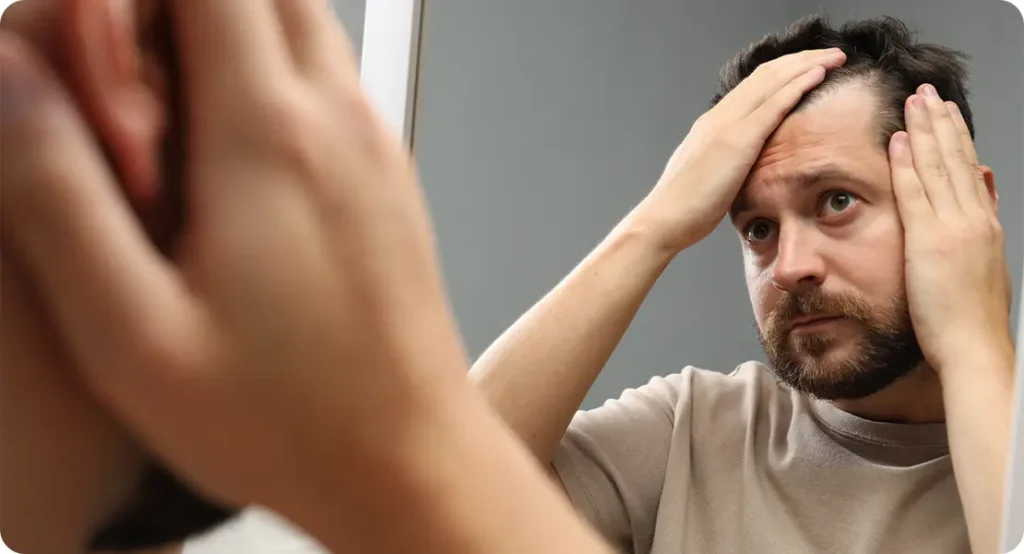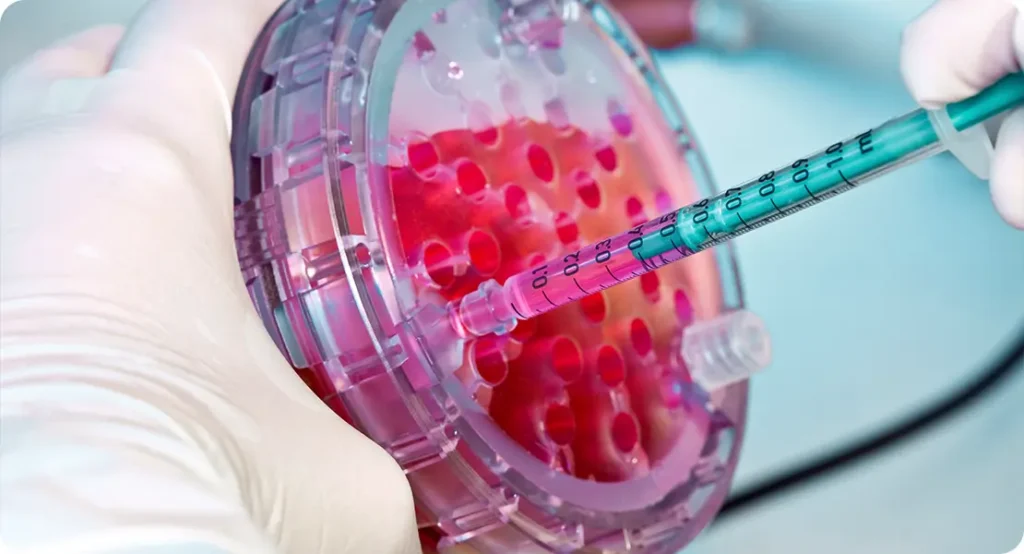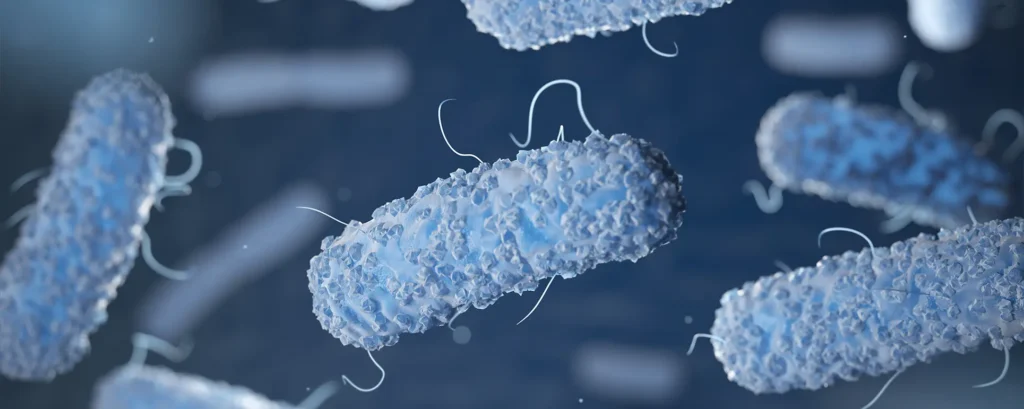Hair loss can be an emotional and often isolating experience. If you’re living with alopecia, you already know it’s much more than just a cosmetic issue. It can affect your confidence, your relationships, and even your mental health.
For decades, treatment options were limited. Many people were told they just had to accept it. But today, the landscape is changing faster than ever. Thanks to advances in immunology and regenerative medicine, researchers are uncovering new ways to target the causes of alopecia and help people regain hair growth and hope. In this article, I’m going to walk you through the most promising treatments in development, from JAK inhibitors to stem cell therapy, and what they could mean for the future of alopecia care.
Let’s explore what’s on the horizon.
Understanding Alopecia: Why It’s So Complex
Alopecia isn’t just a single condition it’s a broad term that encompasses several different types of hair loss, each with its own unique causes, symptoms, and treatment considerations. Understanding these distinctions is key to finding the right approach for managing it.
Here are some of the main types of alopecia:
- Alopecia areata: This is an autoimmune condition where the body’s immune system mistakenly attacks healthy hair follicles, leading to patchy hair loss on the scalp or other areas of the body. It can begin suddenly and may be triggered by stress, illness, or other immune-related factors. In some cases, it can progress to more extensive forms.
- Androgenetic alopecia: Also known as male or female pattern hair loss, this is the most common type of alopecia. It is primarily driven by genetic factors and hormonal changes, particularly the effects of dihydrotestosterone (DHT) on hair follicles. It typically results in gradual thinning over time usually around the crown and hairline in men, and a wider part or diffuse thinning in women.
- Alopecia totalis: A more severe progression of alopecia areata, this form results in the complete loss of all scalp hair. It is also autoimmune in nature and may be harder to treat than milder forms.
- Alopecia universalis: This is the most extreme type, where all hair across the entire body including eyebrows, eyelashes, and body hair is lost. Like alopecia totalis, it is linked to immune dysfunction and can be emotionally and physically challenging to manage.
Because the root causes of alopecia can vary so significantly from immune system misfires to hormonal imbalances and genetic predispositions treatment cannot follow a one-size-fits-all approach. What works for someone with androgenetic alopecia may be entirely ineffective for someone with alopecia areata or universalis.
That’s why accurate diagnosis is essential. In autoimmune forms like alopecia areata, treatments often focus on calming the immune system and interrupting the inflammatory process that damages hair follicles. This can involve anything from corticosteroid injections and topical immunotherapies to cutting-edge options like JAK inhibitors, which are designed to block specific immune pathways.
JAK Inhibitors: The Most Exciting Breakthrough?
If you follow alopecia research, you’ve probably heard about JAK inhibitors.
These are oral or topical medications that block Janus kinase (JAK) enzymes, which play a key role in inflammation. In autoimmune alopecia, JAK pathways are overactive. By switching them off, researchers have been able to restart hair growth in many people.
Tofacitinib and Ruxolitinib
Two of the most studied JAK inhibitors are tofacitinib (originally used for rheumatoid arthritis) and ruxolitinib. Originally developed and approved for autoimmune conditions such as rheumatoid arthritis and certain blood cancers, these drugs are now being repurposed for dermatological use most notably in treating alopecia areata and its more severe forms.
Clinical trials and real-world cases have shown impressive results:
- Regrowth in up to 70% of patients with moderate to severe alopecia areata
- Noticeable improvement often within 3–6 months
Potential downsides:
- These are systemic drugs, so they can suppress the immune system more broadly
- Regular monitoring for infections and blood abnormalities is needed
Still, many dermatologists consider JAK inhibitors the most promising advance in decades.
Baricitinib: The First FDA-Approved JAK Inhibitor for Alopecia

A major turning point in the treatment of alopecia areata came in 2022, when baricitinib became the first JAK inhibitor to receive official approval from the U.S. Food and Drug Administration (FDA) for this condition. This marked a historic moment not just for researchers and dermatologists, but for the millions of people around the world living with severe, often distressing hair loss.
Baricitinib is an oral medication that was originally developed for rheumatoid arthritis. Like other JAK inhibitors, it works by blocking overactive Janus kinase signalling pathways involved in autoimmune inflammation. In the context of alopecia areata, this means it helps suppress the immune system’s attack on hair follicles, allowing them to re-enter the growth phase.
What Do the Studies Say?
Clinical trials leading up to the approval of baricitinib yielded highly encouraging results. The pivotal studies focused on patients with severe alopecia areata, many of whom had lost at least 50% of their scalp hair and in some cases, all of it.
Here’s what the data showed:
- Around one-third of participants achieved 80% or more scalp hair regrowth after one year of consistent daily treatment with baricitinib.
- Many others saw partial but meaningful regrowth, especially in areas that had been bald for extended periods.
- Importantly, the benefits were maintained over time with continued use, suggesting that baricitinib can help sustain regrowth not just initiate it.
These results provided not only clinical validation but also emotional relief for patients who had often tried numerous therapies with limited success.
Topical JAK Inhibitors: A Safer Alternative?
While oral JAK inhibitors have shown impressive results in treating alopecia areata, they also come with a higher risk of systemic side effects due to their widespread impact on immune function. This has led researchers to explore topical JAK inhibitors as a potentially safer and more localised treatment option especially for patients with milder forms of the condition or those who wish to avoid systemic exposure.
Topical formulations of drugs like ruxolitinib and tofacitinib are designed to be applied directly to affected areas of the scalp. Instead of circulating throughout the body, they act on the skin’s surface and nearby hair follicles, aiming to reduce inflammation and restore hair growth where it’s needed most.
What Do Early Studies Show?
Initial research and clinical trials have produced encouraging but modest results. In small-scale studies and real-world case reports, some patients using topical JAK inhibitors have experienced noticeable hair regrowth particularly when the treatment is started early and used consistently over time.
Benefits observed so far include:
- Reduced local inflammation at the hair follicle level
- Mild to moderate hair regrowth in patchy alopecia areata
- Lower risk of systemic side effects, since the drug absorption into the bloodstream is minimal
These findings suggest that topical JAK inhibitors may be a viable option for patients who cannot tolerate oral medications or who prefer a less invasive approach.
Where Do They Fall Short?
However, it’s important to note that topical JAK inhibitors tend to be less effective than their oral counterparts especially in cases of extensive or long-standing hair loss, such as alopecia totalis or universalis. Because the medication doesn’t penetrate deeply enough in all cases, it may not fully suppress the immune activity around deeply rooted or dormant follicles.
Researchers are actively working to improve this. Current efforts include:
- Optimising the formulation and drug delivery systems, such as nano-carriers and microneedle patches, to enhance skin penetration
- Combining topical JAK inhibitors with other therapies, like microneedling or light therapy, to increase absorption and stimulate follicular response
- Conducting larger clinical trials to better understand which patients are most likely to benefit
In the future, improved topical formulations could offer a middle ground providing meaningful results without the broader risks associated with systemic immune suppression.
Stem Cell Therapy: The Future of Hair Regrowth?

Stem cells are the body’s master cells, capable of transforming into many types of tissue including hair follicles.
Scientists are exploring ways to:
- Reactivate dormant hair follicles by injecting stem cell-derived growth factors
- Create new follicles using 3D cultures of hair follicle stem cells
- Combine stem cells with PRP (platelet-rich plasma) to enhance regrowth
Early-phase studies and animal models have shown that stem cell treatments can increase hair density and thickness.
While this area is still experimental, it could eventually offer regenerative solutions for people who haven’t responded to other therapies.
PRP (Platelet-Rich Plasma): Still Gaining Momentum
While not new, platelet-rich plasma (PRP) remains a hot topic in hair restoration. PRP involves drawing a small amount of your blood, processing it to concentrate the platelets, and injecting it into the scalp.
These platelets release growth factors that can:
- Stimulate hair follicles
- Improve blood supply
- Prolong the growth phase of hair
Recent studies continue to support PRP as a safe option, particularly for:
- Androgenetic alopecia (pattern hair loss)
- Early-stage alopecia areata
For many people, PRP is appealing because it’s minimally invasive and uses your body’s own cells.
Microbiome Research: An Unexpected Link

In recent years, scientists have begun to uncover a fascinating new connection in the world of hair loss treatment one that doesn’t involve immune suppression or hormone blockers, but rather the scalp microbiome. This refers to the diverse community of bacteria, fungi, and other microorganisms that naturally live on the surface of your scalp. Just as the gut microbiome is essential for digestive and immune health, the scalp’s microbial balance appears to play a crucial role in maintaining healthy hair follicles and regulating inflammation.
What Are Researchers Exploring?
Though this area of study is still relatively new, scientists are already testing innovative approaches that could use the microbiome as a therapeutic target. Among the most promising strategies are:
- Probiotic supplements – These are oral supplements containing beneficial bacteria that may help modulate the immune system and reduce inflammation from within. Some studies are exploring whether improving gut microbiome health can indirectly benefit skin and scalp conditions by reducing systemic immune reactivity.
- Prebiotic scalp treatments – Prebiotics are compounds that nourish beneficial microbes. Topical products containing prebiotics aim to rebalance the scalp’s ecosystem by encouraging the growth of “good” bacteria that support skin barrier function and reduce inflammation.
- Microbiome transplants – Still highly experimental, this concept involves transplanting a healthy microbial community onto the scalp of someone with hair loss. It’s similar to fecal microbiota transplants used in gut health and is being investigated as a way to restore microbial diversity where it’s been disrupted.
Why This Matters
What makes microbiome research so exciting is its potential to offer gentle, non-invasive treatments that work in harmony with the body, rather than overriding it. Unlike drugs that suppress the immune system or alter hormone levels, microbiome-based therapies may support the skin’s natural balance and reduce inflammation with fewer side effects.
Low-Level Laser Therapy (LLLT)
Low-level laser therapy (LLLT), also known as red light therapy or cold laser therapy, is a non-invasive treatment that uses specific wavelengths of light to stimulate hair follicles and improve blood flow to the scalp. The idea is that increased circulation brings more oxygen and nutrients to the hair roots, supporting healthier and stronger growth.
LLLT devices come in various forms from professional, in-clinic machines to portable at-home solutions like laser combs, helmets, and caps. These tools are designed for regular use and have become increasingly popular due to their ease of access and relatively low risk profile.
What Does the Research Say?
Multiple studies have shown that LLLT may:
- Increase hair density and improve overall hair thickness, especially in individuals with androgenetic alopecia
- Slow down the progression of hair loss, particularly when started early
- Support hair regrowth when used in combination with other therapies such as minoxidil or platelet-rich plasma (PRP)
While results can vary depending on the person and the severity of hair loss, LLLT is generally well-tolerated and associated with minimal side effects most commonly, mild scalp irritation or redness that resolves quickly.
Because it doesn’t involve medications or injections, LLLT is often considered a valuable complementary therapy, either as a standalone option for mild cases or in combination with other treatments to enhance results over time.
The Role of Lifestyle and Stress Management
Even with the exciting advances in medical treatments for alopecia, lifestyle factors still play a vital role in managing the condition and supporting long-term hair health. While alopecia is often driven by autoimmune or genetic mechanisms, research shows that chronic stress, poor nutrition, and inconsistent care routines can trigger or worsen hair loss especially in autoimmune forms like alopecia areata.
That’s why dermatologists frequently emphasise the importance of building healthy daily habits alongside any prescribed treatments. Addressing stress and overall wellness can help reduce flare-ups, improve treatment outcomes, and create a more supportive environment for hair regrowth.
Some commonly recommended strategies include:
- Mindfulness techniques or counselling – Chronic psychological stress can disrupt hormonal balance and immune function. Practices such as meditation, yoga, breathing exercises, or working with a therapist can help reduce anxiety and improve resilience, which in turn may support hair recovery.
- A balanced, nutrient-rich diet – Deficiencies in key nutrients like iron, zinc, vitamin D, biotin, and protein can impair hair growth and weaken the scalp. Eating a varied diet with plenty of whole foods such as leafy greens, nuts, seeds, lean proteins, and healthy fats can help provide the building blocks your hair needs to grow and stay strong.
- Gentle hair care practices – Avoiding tight hairstyles, excessive heat styling, and harsh chemical treatments can minimise additional stress on fragile hair. Using soft-bristled brushes and mild, sulfate-free shampoos can reduce breakage and scalp irritation.
- Consistent treatment adherence – One of the most important, yet often overlooked, factors in successful hair regrowth is sticking to your treatment plan. Whether you’re using topical medications, taking oral therapies, or undergoing procedures like PRP or laser therapy, regular and correct use is key to seeing lasting benefits.
While no lifestyle change can fully replace medical treatment for alopecia, combining both approaches gives you a strong foundation for long-term improvement. It’s about treating the condition from every angle biological, emotional, and environmental.
What to Expect When Trying New Treatments
If you’re thinking about starting any of these emerging therapies, it helps to set realistic expectations.
- Regrowth can take 3–6 months or longer.
- Not everyone responds in the same way.
- Maintenance treatment may be needed to sustain results.
A dermatologist can guide you through options and help you weigh the benefits and risks.
Final Thought: Hope and Healing for Alopecia
Alopecia can be deeply challenging, but there’s real hope on the horizon. From JAK inhibitors and stem cell therapies to microbiome research and laser treatments, the next generation of options is more targeted, sophisticated, and promising than ever.
You deserve care that’s informed by the latest science and the support to feel confident in your skin again. To find out which treatments are best suited to your needs, feel free to book a consultation at our alopecia clinic in London.
References:
- U.S. Food and Drug Administration (2022) OLUMIANT (baricitinib) label FDA approval for severe alopecia areata, FDA. https://www.accessdata.fda.gov/drugsatfda_docs/label/2022/207924s007lbl.pdf
- King, B. A., Ko, J., Forman, S., Ohyama, M., Mesinkovska, N., Yu, G., et al. (2021) Efficacy and safety of the oral Janus kinase inhibitor baricitinib in the treatment of adults with alopecia areata: Phase 2 results from a randomized controlled study, Journal of the American Academy of Dermatology, 85(4), pp. 847–853. DOI: 10.1016/j.jaad.2021.05.050. https://www.ncbi.nlm.nih.gov/pmc/articles/PMC10191081/
- Zhang, W., Li, Z. & Li, J. (2023) Human stem cell use in androgenetic alopecia: a systematic review, Stem Cell Research & Therapy, 14, Article 91. https://www.ncbi.nlm.nih.gov/pmc/articles/PMC10047891/
- Gentile, P. & Garcovich, S. (2020) Systematic review of platelet‑rich plasma use in androgenetic alopecia compared with minoxidil, finasteride, and adult stem cell‑based therapy, International Journal of Molecular Sciences, 21(7), Article 2569. https://en.wikipedia.org/wiki/Platelet-rich_plasma
- Niederstoetter, M. et al. (2024) Safety of Baricitinib in Adults with Severe Alopecia Areata from Two Phase III Trials (BRAVE‑AA1 & AA2), American Journal of Clinical Dermatology, advance online publication. https://link.springer.com/article/10.1007/s40257-025-00932-0
